Disclosure: Meeple Mountain received a free copy of this product in exchange for an honest, unbiased review. This review is not intended to be an endorsement.
Ikhwan Kwon’s Pyramido is a 2023 tile-laying game about placing colourful dominoes to create a pyramid and scoring points based on grouping coloured areas and icons together. In my review of Pyramido I said:
“Pyramido is a handsome game. Colourful tiles, playful icons, bold wooden markers, a vertical build, the tempting façade of tabletop satisfaction. It’s a charming way to spend half an hour or so… straightforward, with just enough decision points and constriction to keep it interesting.”
The game isn’t completely flawless and it sits in a competitive space within the tabletop landscape, but it’s well worth a look if puzzley tile-laying games are your thing. Or at least it was…
Without a doubt, 2025’s sequel Pyramido: Forgotten Treasures is the better game. Designed by Kwon and Carl Brière and published by Synapses Games, it fixes most of the issues with the original’s end game and makes the early game more interesting, all without adding any complexity. I scored the original 3.5 out of 5 (‘Good – Enjoy playing’) and whilst I’m always a little uneasy about the value of ratings since they hide meaningful context and nuance, the new version has jumped up a point.
Within this area of the hobby, Pyramido: Forgotten Treasures is a contender.
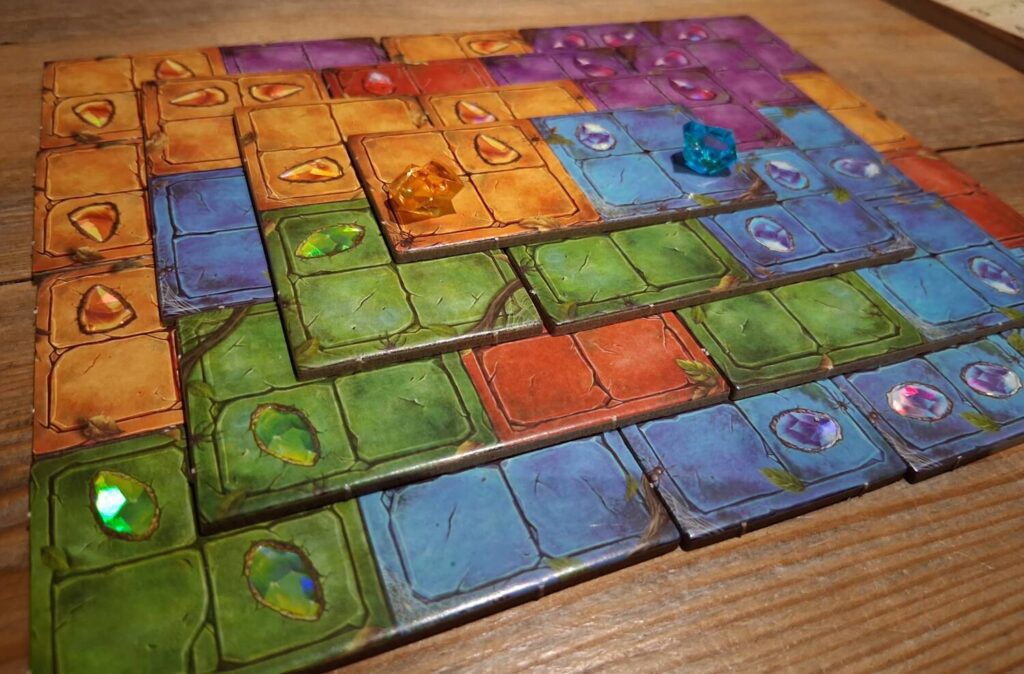
In this review, I’m going to mainly focus on how this new game improves on its predecessor. Everything in my above quote on the original stands true for the sequel (except that the wooden markers have been replaced with lovely gems and pretty spot-foiling on the tiles). The goals and processes of the game are broadly the same, but the changes improve the experience.
If you’re new to the series, then Forgotten Treasures is the one to try first. If you enjoy the original, then this new version is worth trying to see whether the added flexibility is for you. If you played the original and liked the concept but not the execution, then Forgotten Treasures might even convince you otherwise. If you enjoy flat pyramids and being alone, then this new Pyramido even has a solo mode. But if colourful tile laying games aren’t your cardboard craving, then probably best you move along.
Shall I compare thee…
Forgotten Treasures carries over most of the same gameplay from its predecessor. You’re still trying to create areas of icon-studded colour as you build a four-layered domino pyramid. But how you go about it is subtly different, mechanistic tweaks throughout that strengthen the experience.
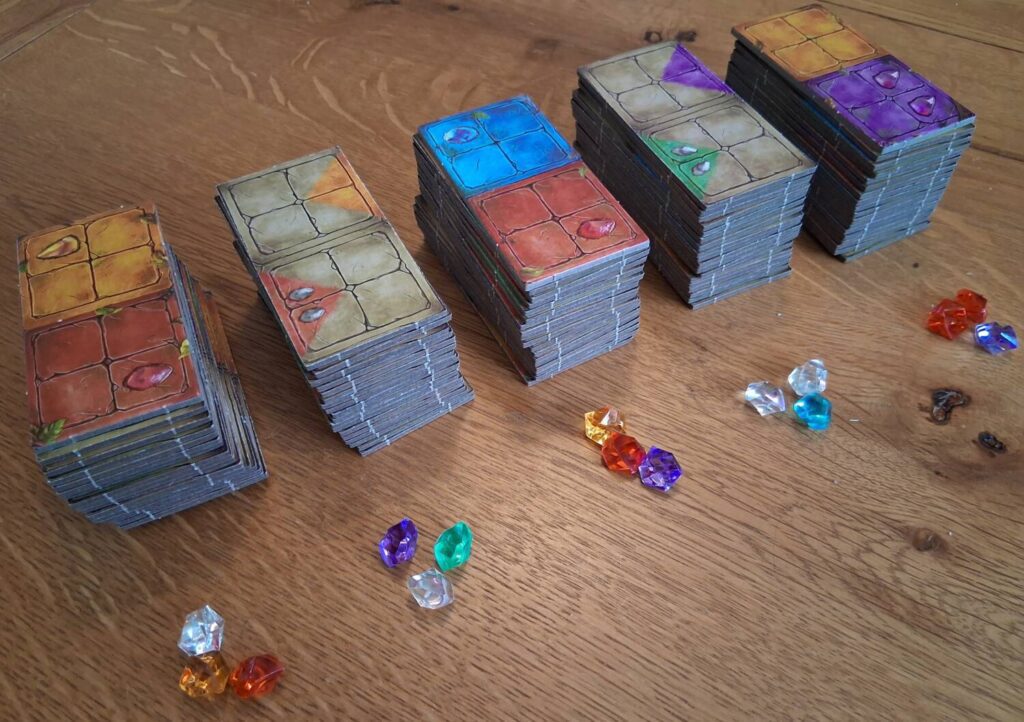
The main changes revolve around the gems. Gone are the original’s wooden scoring markers and in their place are shiny gems to collect. They come in the same five colours as the tiles, with a sixth colour that is wild. You gain them from a market reminiscent of Cascadia’s tiles and tokens: when you take a domino you also choose one of the 1-3 gems randomly paired with it.
The gems are your new scoring markers – at the end of each of the four rounds you place gems in matching-coloured areas to score those areas. One gem to score an area once, three gems to score an area twice, and two of the wild gems to stand in for any colour. Crucially, placing gems isn’t constricted to the level of the pyramid you’ve just built.
Thou art more lovely…
The result is an experience that is more flexible, interesting and rewarding.
The market is more interesting throughout the game, but especially towards the end. You’re juggling two separate but connected needs. Since you can’t score without the correct gem(s) they’re just as important as the tiles. The market refill process is also streamlined, making it more intuitive and easier to tentatively plan ahead, particularly at lower player counts.
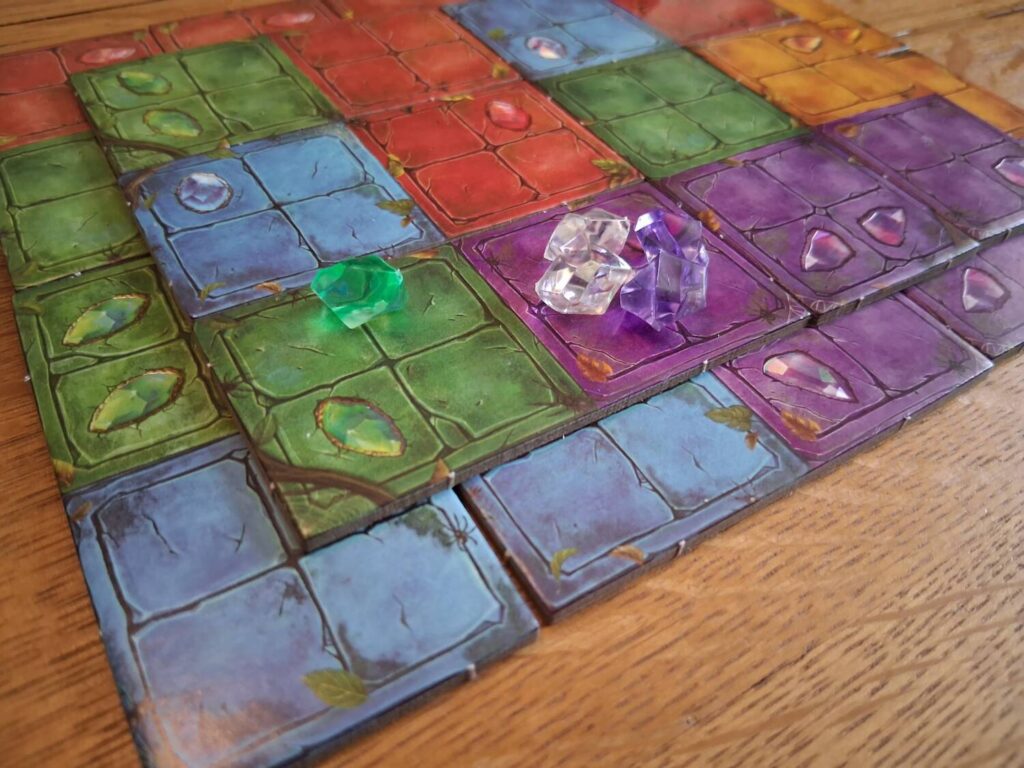
The scoring is more interesting throughout the game, especially towards the start. You can only keep 5 gems between rounds, meaning you can’t hoard throughout the game for a final bonanza. At the end of your first round, you’ll have 10 gems and there’s always that option of double scoring an area. Rather than being forced to play your scoring marker at the first sign of an icon (as in the original), you have the choice of spending high or playing it safe with your gems, which then feeds into your market decisions and tile choices.
And the final round is more interesting as well. Rarely in the original was the final tile choice anything but obvious. Here, though, there are often several potential routes depending on which tile and gem you want to select and what gems you have left over from previous rounds. There may still be an optimal move but what that is becomes harder to intuit. That’s a quarter of your total points up for grabs in a more engaging way. And the addition of gems also makes the final round longer (due to both choosing and spending gems), which helps to balance the pacing a little.

The final round also feels fairer. There are only five colours instead of six so there’s less chance that you’ll be completely shut out from the market on your final turn. But even if you are, since you can juggle more colour areas throughout the game there’s always something you can do. And messing with an opponent doesn’t feel as unearned and debilitating either. You can still influence what tiles are in the market to deny an opponent a particularly good tile, but because there’s more flexibility it feels competitive rather than spiteful.
So long lives this…
In comparing the two games you might feel that Forgotten Treasures is the softer game. Looser and less restrictive. Caverna to the original’s Agricola. Summer Pavilion compared to the original Azul. Easier.
In a way you’d be right. You don’t have to juggle as many colours. You’re unlikely to be locked out completely. Your hard work in earlier rounds can still benefit you, regardless of what you play in this round. With all that bite gone, surely what remains is toothless?
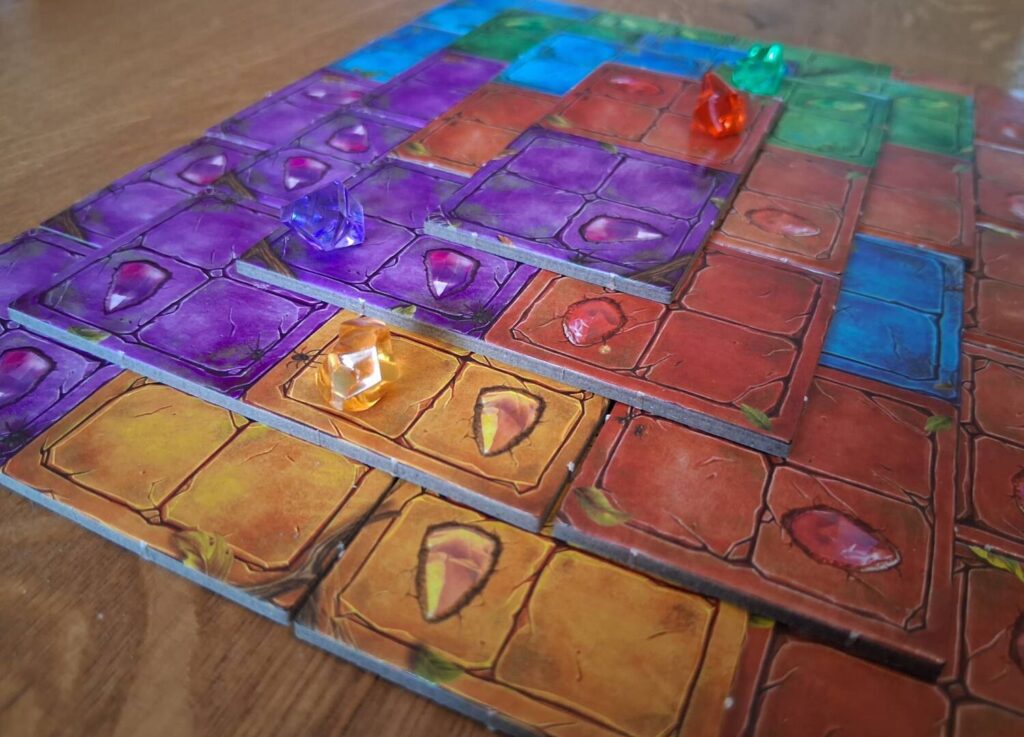
Thankfully, Forgotten Treasures isn’t all gums.
The bite is more purposeful, however. Before, the restrictions felt forced, the sharpness often down to chance and the tiles in the market. Forgotten Treasures lacks some of that randomness. Instead, the tension comes from the dual market, needing tiles to expand areas and gems to score them. You spend gems thinking you’ll collect more of the same colour to score later, but it’s a temptation that doesn’t always pay off. This sense of risk works for the game. You feel clever for successfully navigating its treacherous jungle, rather than simply relieved that a jaguar didn’t spring from the shadows this time round.
One sign of this improvement is the lack of resurfacing tiles. These always felt like Kwon was papering over the cracks in the design, providing a deus ex machina for the end game issue. Forgotten Treasures doesn’t have resurfacing tiles or any other crutch. It’s a very smooth design; those cracks aren’t present.
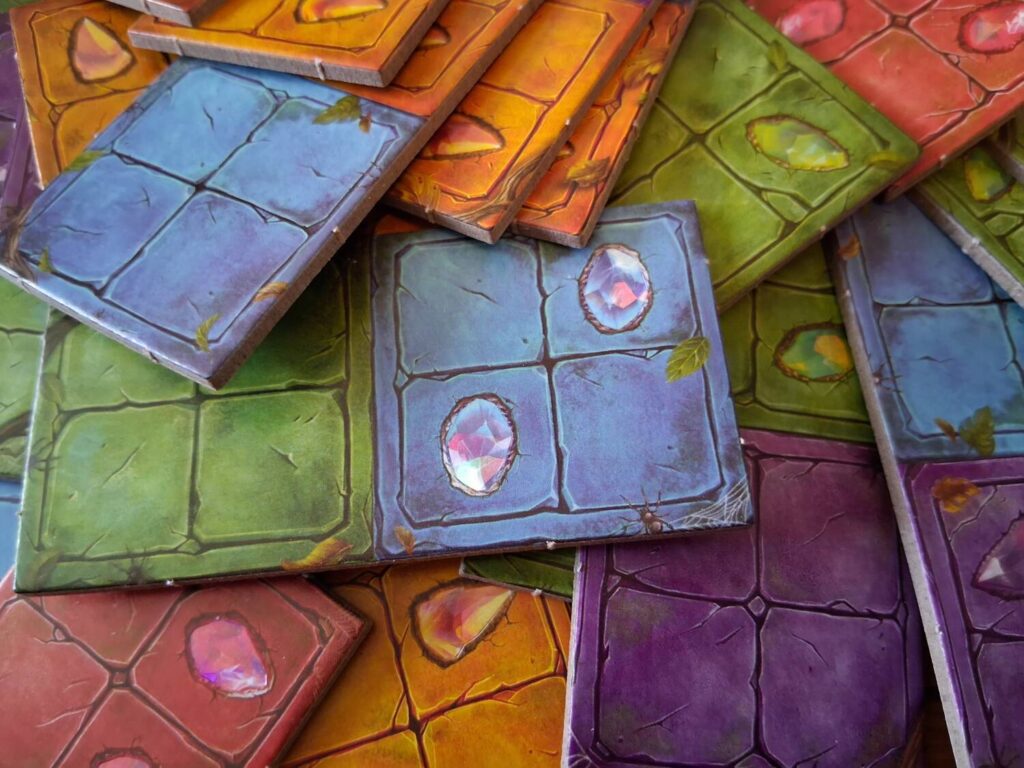
The arc is still unusual. Not a deal breaker, but worth knowing. Round length shrinks quickly as you build higher; a pyramid’s top is less substantial than its base and the final round is a single turn. The brevity makes the experience slightly anti-climactic, despite being a vast improvement on the original game.
Forgotten Treasures is the version I’ll be playing from now on. The tension between tiles and gems in the market tickles your brain, how you spend your gems throughout the course of the game teases your greed, and the option to mess with your opponents tempts your morality. There isn’t more going on, it’s just that more elements of the game are more engaging. Plus, there’s a solo mode which is surprisingly decent.
Here’s hoping this treasure won’t be forgotten.


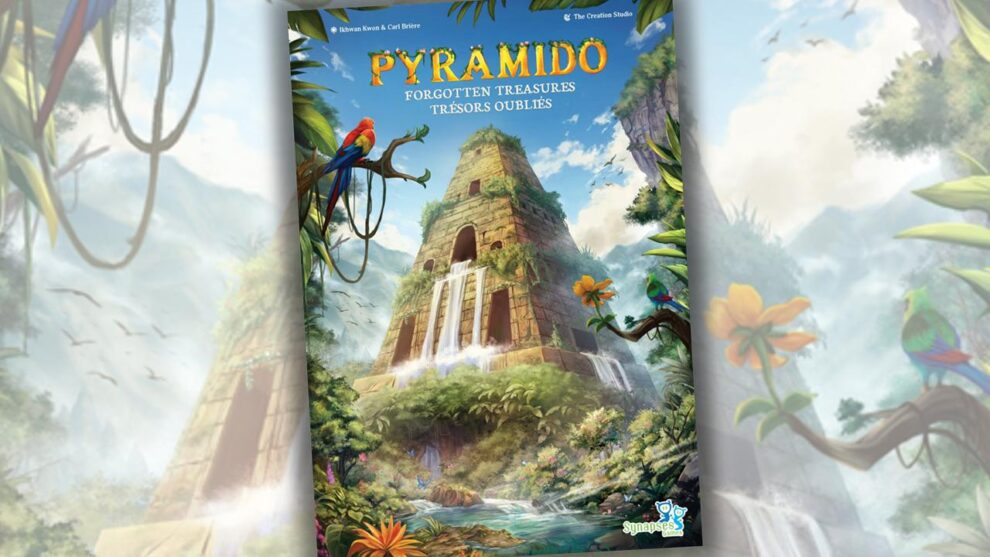
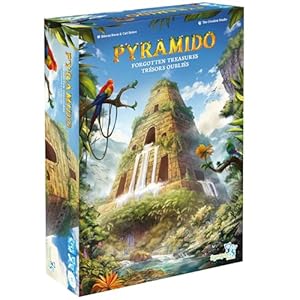
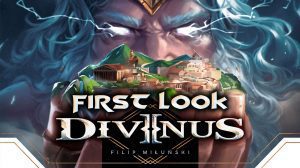


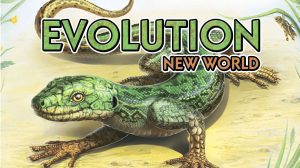


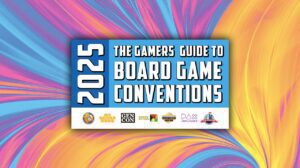

Add Comment